The project looks over a series of virtual tours from Google, Cyark, and Open Heritage 3D. I then provide some general thoughts on the subject of virtual tours.
Google Art & Culture
Google’s approach seems the most traditionalist. It provides a scrolling webpage with brief captions. The brevity of the tour was rather severe; the whole affair took about three minutes and each slide only provided a couple lines of text. The page displayed below is from a tour of the castle near Fujairah’s fort in the United Arab Emirates, but other tours seemed to fall in a similar length. The experience felt closer to a tourist guide than a “tour” itself.
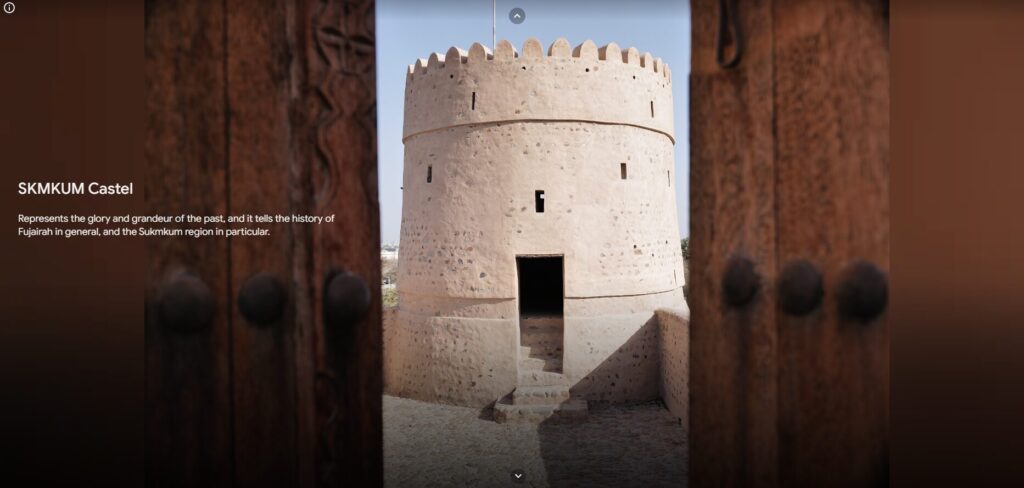
Cyark
The most useful of the three program appears to be Cyark’s 3D virtual tours. The Fujairah Fort also features on this site, but in a manipulable 3D format, so I’m using it as my example once again.
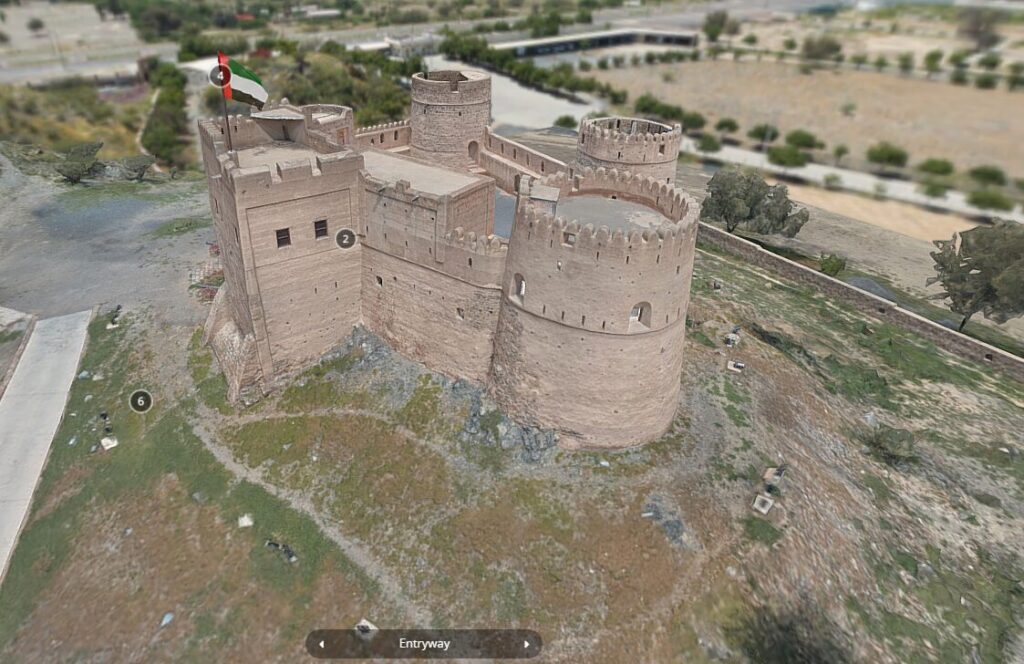
Each of the numbered points on the screen can be selected to view a short paragraph on the feature of the structure it’s attached to, as seen below.
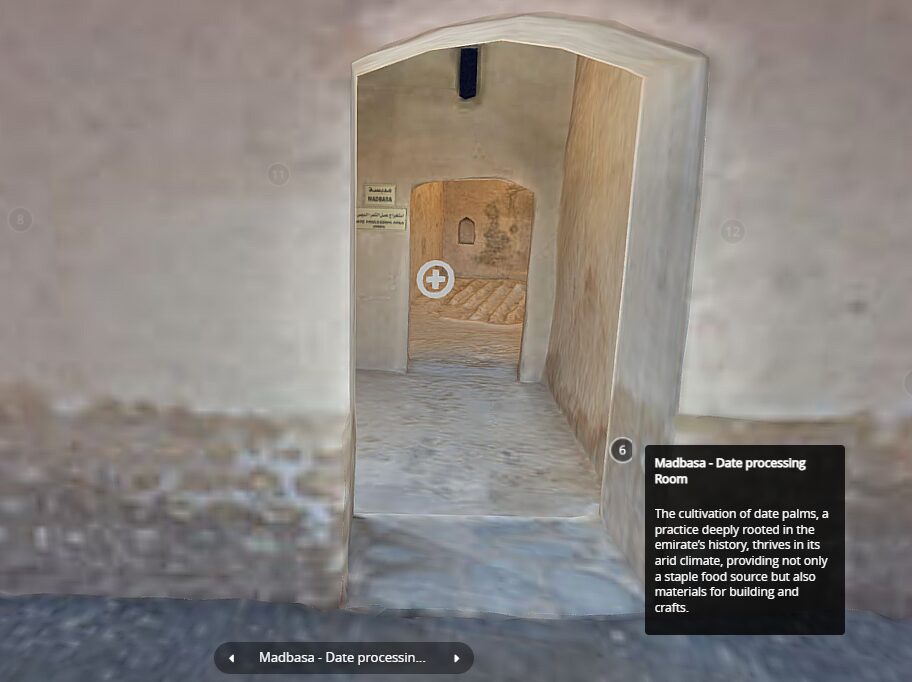
This feature is welcome, though not always fully functional. It drags the screen to wherever the feature is, regardless of whether the informational tag can be read, as is the case with #3 (shown below with the tag “opened”). Other tours had similar struggles.
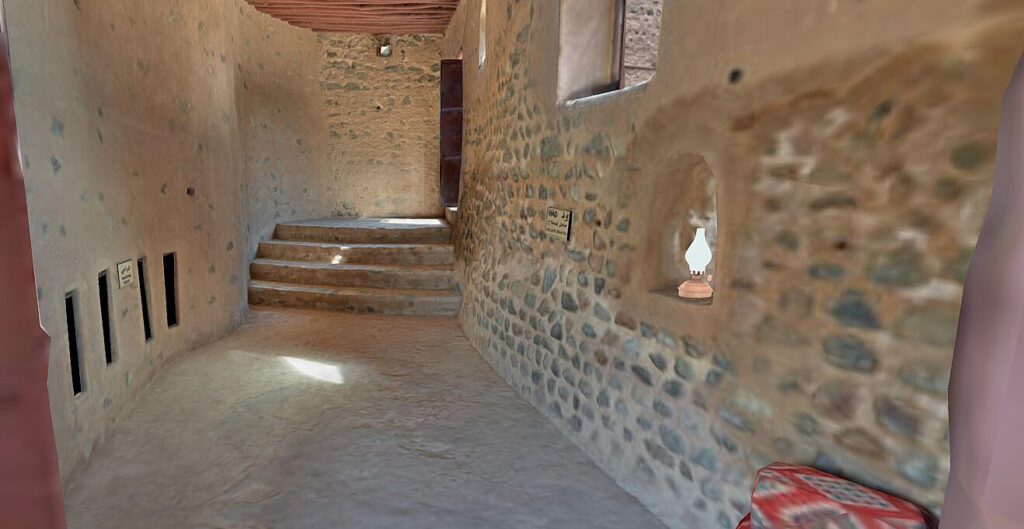
Though a little difficult to control, the Cyark site seems to be the best of the three options by far, allowing a user to manipulate a location in full 3D without losing readability.
Open Heritage 3D
As a disclaimer, it is possible that technical issues could have contributed to my issues with Open Heritage 3D. The models seemed not to fully load, gaining more detail when I zoomed in on a specific spot, but never keeping up the detail across a wider area, even given around 30 minutes to do so. In either case, the below image is representative of my experience on the site.
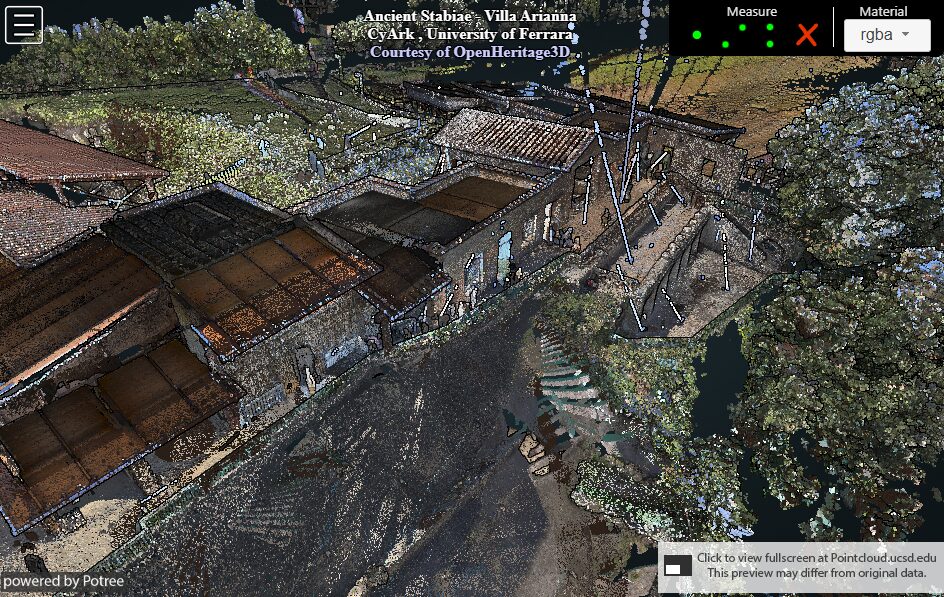
The shapes of some buildings are clear, but most of the terrain and vegetation remains an unidentifiable mess. There also seem to be strange streaks emanating from the ground; these only appeared in some of the models, so I have no idea if they are intentional or what they could represent. Regardless, general readability was poor in every model I sampled.
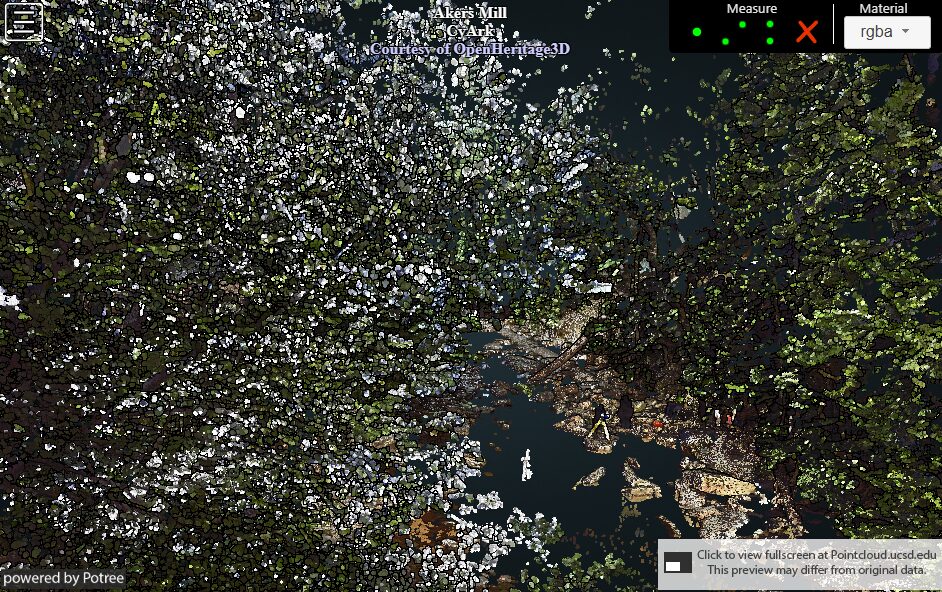
The models, while potentially useful if cleaned up with the right software, are too confused and dysfunctional to be usefully employed at the present moment.
General Thoughts
Virtual tourism is a concept which has been on the horizon for some time, but it is only now coming into the realm of possibility as technologies like virtual reality are being pushed down to the public. At its core, virtual tourism is a valuable way for members of the public to view and interact with important historic and cultural sites from across the globe. This is ever more important in the current period as increasingly nationalist governments are damaging the ability for scholars and tourists alike to cross borders and access such significant locations.
On the other hand, virtual tourism cannot (at least under current or near future technology) replace “boots on the ground” tourism. Sight is only one sense and even the visuals themselves are not nearly as interesting as those seen in person, in the sense of both personal enjoyment and academic interest. Virtual tourism is a less desirable substitute to be used when access to the location in question is too dangerous or expensive.